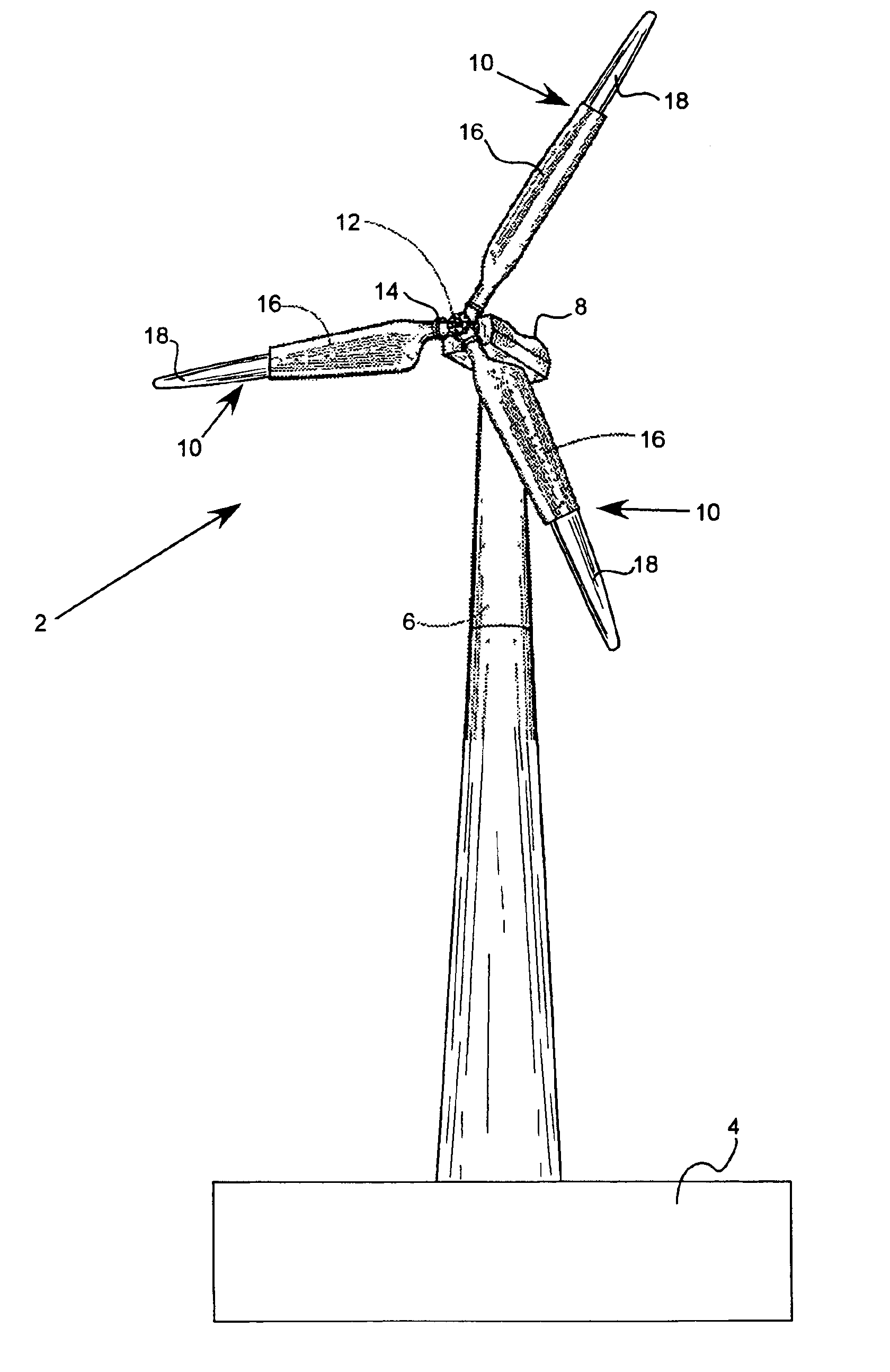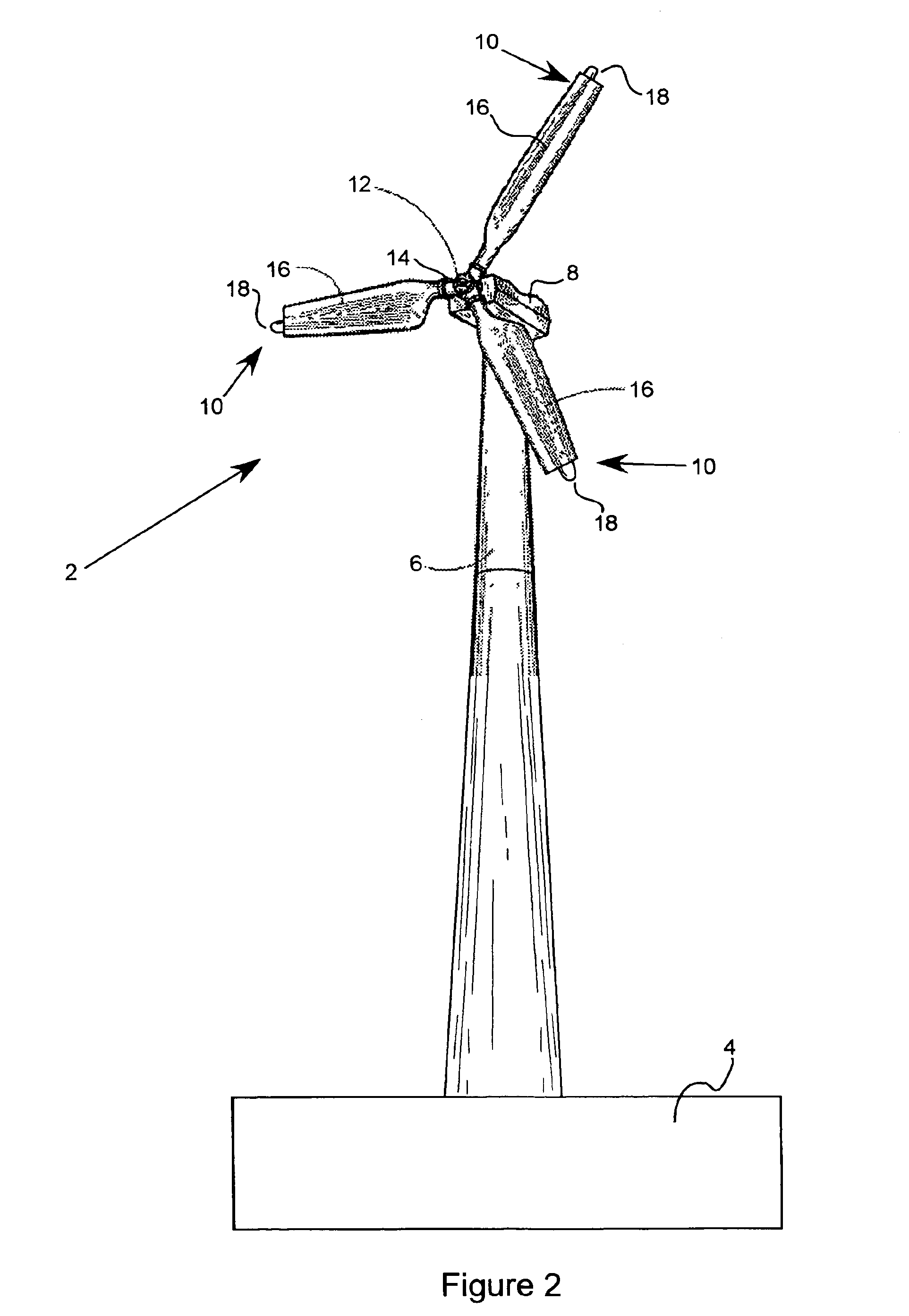Telescoping wind turbine blade
a technology of wind turbine blades and blades, which is applied in the direction of rotors, vessel construction, other chemical processes, etc., can solve the problems of inability to easily change or remove hub extenders, turbines that do not perform optimally, and lack of teaching to utilize such rotors on wind turbines. achieve the effect of minimizing aerodynamic load and regulating the amount of power intercepted
- Summary
- Abstract
- Description
- Claims
- Application Information
AI Technical Summary
Benefits of technology
Problems solved by technology
Method used
Image
Examples
Embodiment Construction
[0051]The variable length rotor blade of the present invention is described herein for use with an electricity-producing wind turbine 2 as shown in FIG. 1. The wind turbine 2 consists of a foundation 4, a tower 6, a nacelle 8, and a number of variable length blades 10 according to the present invention. There are typically two or three blades 10 on an electricity-producing wind turbine 2. The blades 10 are attached to a hub 12 by a bolt flange 14. Alternatively, the blades 10 can incorporate studs that are embedded in the structure of the blade and bolted to the hub 12. The bolt flange 14 on most wind turbines 2 is one of several standard sizes so that retrofitting existing wind turbines 2 with new blades 10 is relatively simple. U.S. Pat. No. 4,915,590, the teachings of which are incorporated herein by reference, describes various types of blade-hub connections.
[0052]The variable length blades 10 consist of two portions. There is a fixed blade section 16 which is rigidly attached t...
PUM
 Login to View More
Login to View More Abstract
Description
Claims
Application Information
 Login to View More
Login to View More - R&D
- Intellectual Property
- Life Sciences
- Materials
- Tech Scout
- Unparalleled Data Quality
- Higher Quality Content
- 60% Fewer Hallucinations
Browse by: Latest US Patents, China's latest patents, Technical Efficacy Thesaurus, Application Domain, Technology Topic, Popular Technical Reports.
© 2025 PatSnap. All rights reserved.Legal|Privacy policy|Modern Slavery Act Transparency Statement|Sitemap|About US| Contact US: help@patsnap.com



